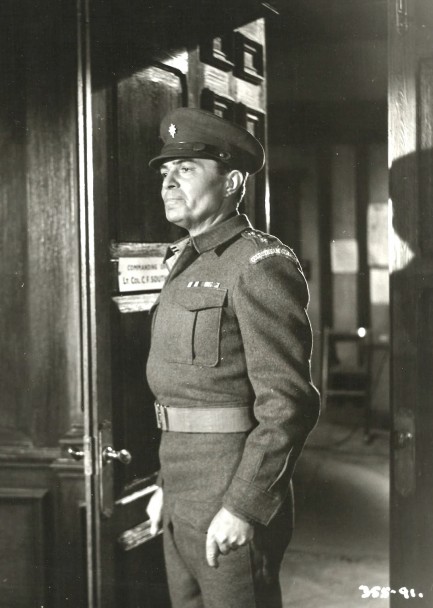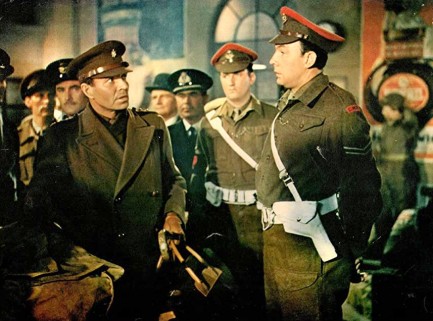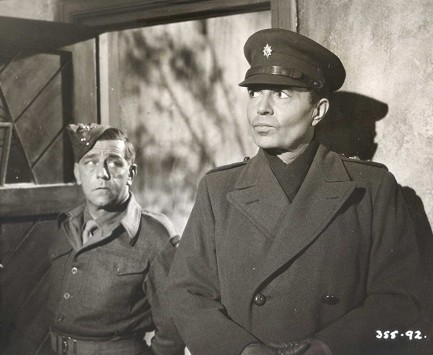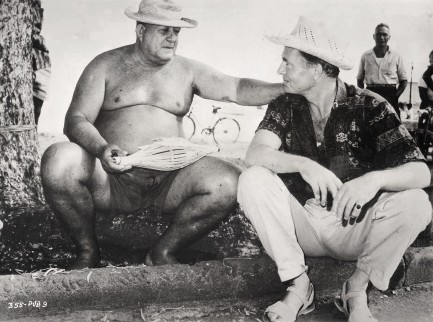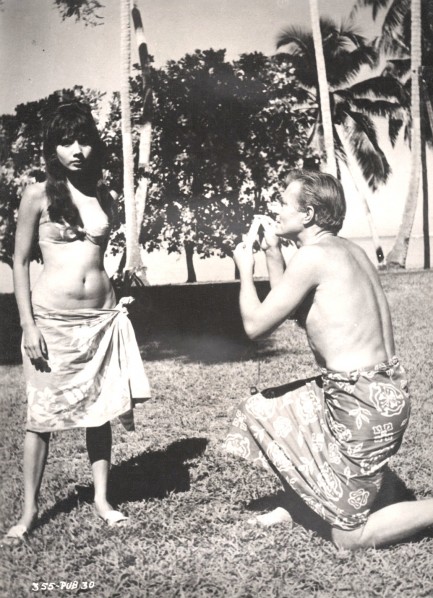 It was a good thing for its readers Hush-Hush didn't know the meaning of the term. 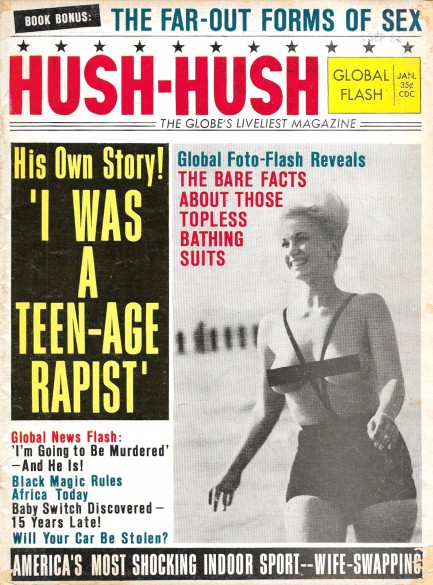
No, we're not going to get into teen-age rapist story that dominates this cover of Hush-Hush published back in January 1965. Though based on a real occurrence, the article is titillation disguised as crime reporting, written during an era when many men thought of rape in one of three ways: vandalization of personal property if the victim was his wife or girlfriend; an attack on the family castle if she was a relative; and she asked for it, which was reserved for most other women. We stress “many men,” not all. From what we gather the majority properly saw it as a heinous attack on the woman. Of course, the vicious nature of it didn't stop it from being widely used as a cinematic and literary device, but that's another discussion, one we've already had and doubtless will again.
Elsewhere on the cover you get photographic proof that topless bathing suits really did exist during the 1960s. There are only a few photos of the things, but Hush-Hush adds to the library of visual confirmation. Now we need proof of the existence of David Dodge's completely backless cache-sexe that made women look nude when viewed from the rear. He says they were worn on the French Riviera during the 1950s, but we have a feeling proof won't be forthcoming anytime soon, absent a time machine and careful coordinates. Lastly, the cover's bottom banner touts wife swapping. How popular was this practice? We can't know. We suggest asking your grandma. But first compliment her cooking: “This casserole is delicious, gram-gram. Did you and paw-paw ever screw other married couples for kicks? Can I have more peas?”
The next article we want to call attention to is, “How Do Tahitian Beauties Drive Men Wild?” Vintage novels that waxed pornographic about the sexual attitudes of Pacific Islanders were almost an official sub-genre, so this story was a must-read for us. And for you too, which can do below. At least mostly. We couldn't upload the entire thing. It's too long, but there's enough to give you the gist. And the gist is simply that Tahitians apparently had no taboos concerning sex, partners, and privacy. The story is framed around alleged trysts with various Hollywood stars, and how Hush-Hush avoided lawsuits from those stars is really a mystery. You'll be entertained. We will say, though, that it's rather unfortunate that the story is couched in insulting terms toward Tahitian women.
As a final note, Hush-Hush used a cheaper printing process and lower quality paper than other publications from the same rank. Those two aspects of the magazine worsened as time passed. By 1965, it was barely a step above the National Informers of the world in terms of technical values. Because of that our scans aren't great. The cheap printing resulted in a scanner moiré pattern on most of the black and white content (though the color came out fine). It's actually fixable in Photoshop or Gimp, so we hear, and we have both programs, but do we want to do all that work for cheap-ass Hush-Hush? We decided we didn't. Therefore, what you see is what you get—twenty-plus scans below.
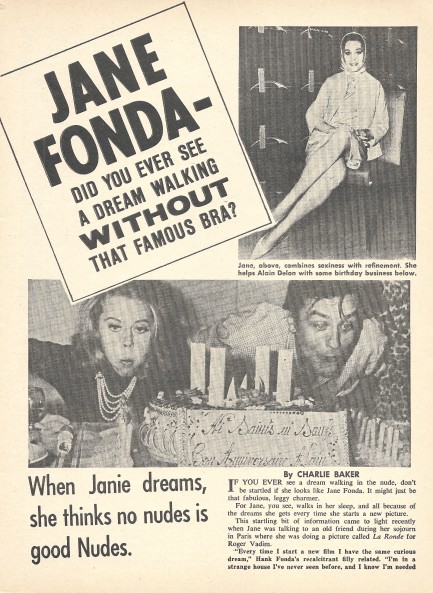 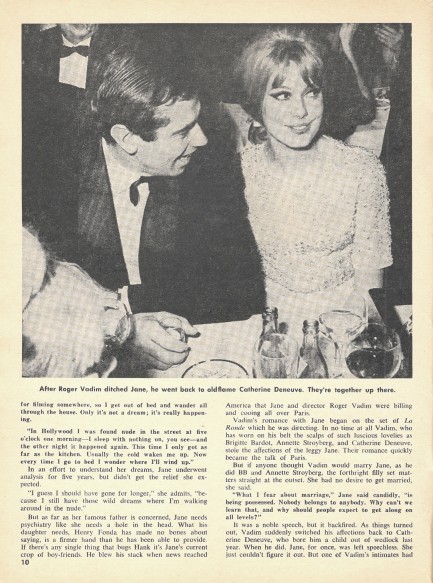 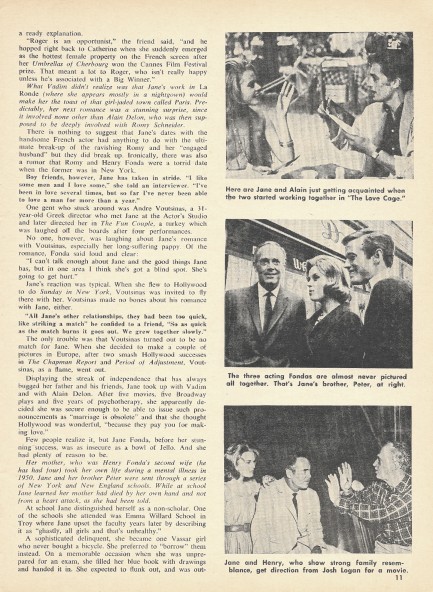 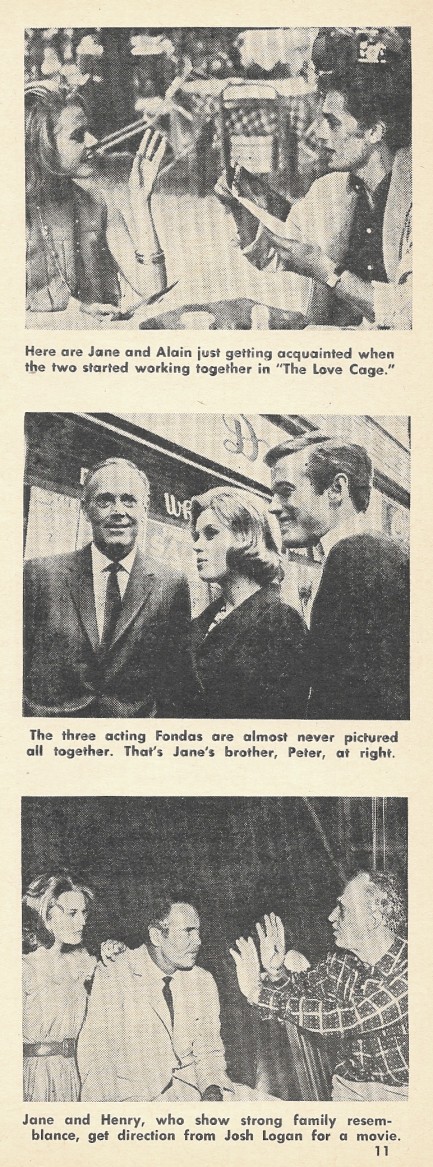 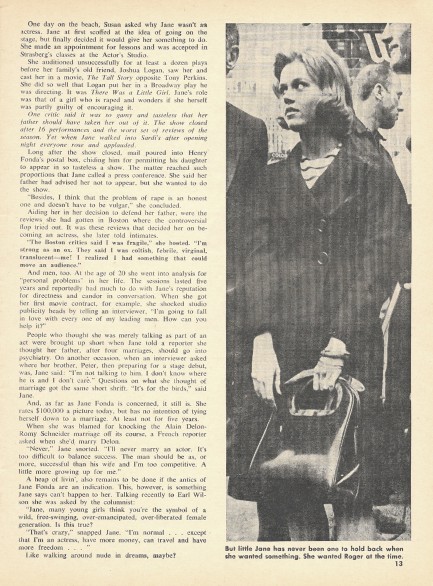 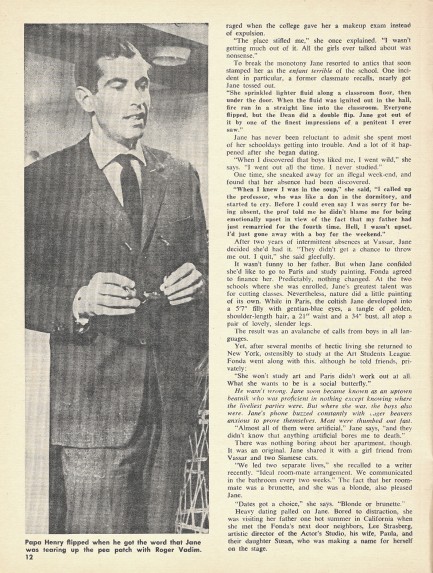 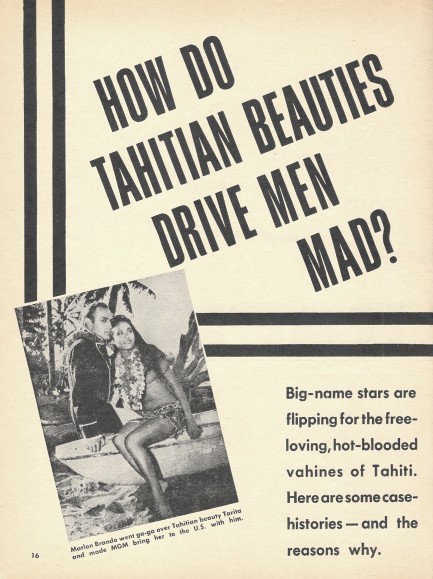 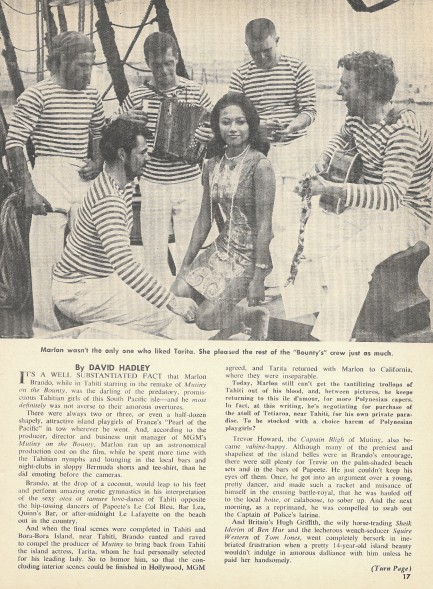   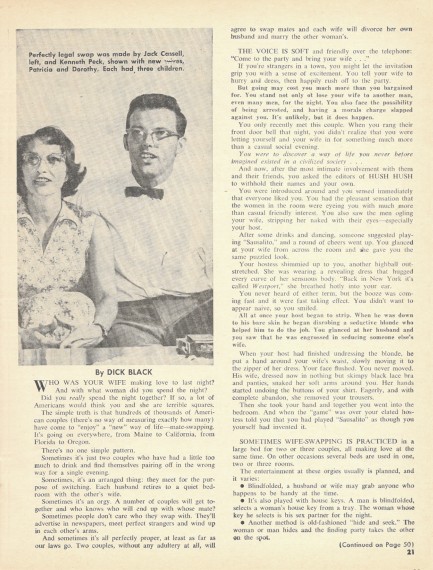 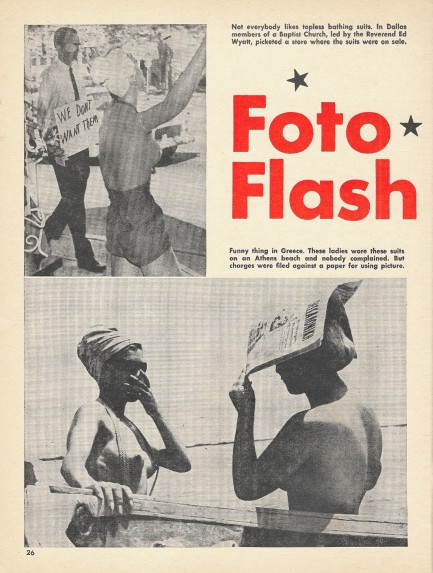 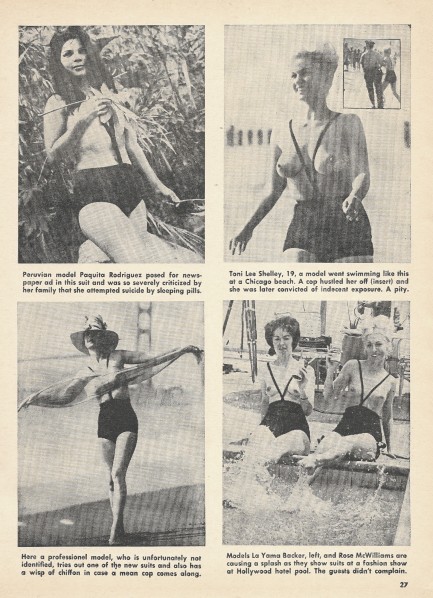 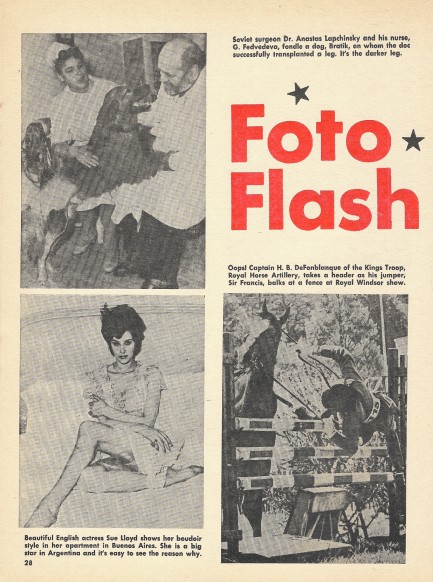 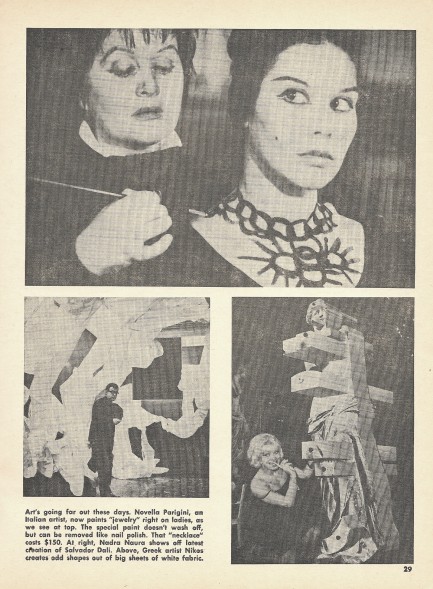 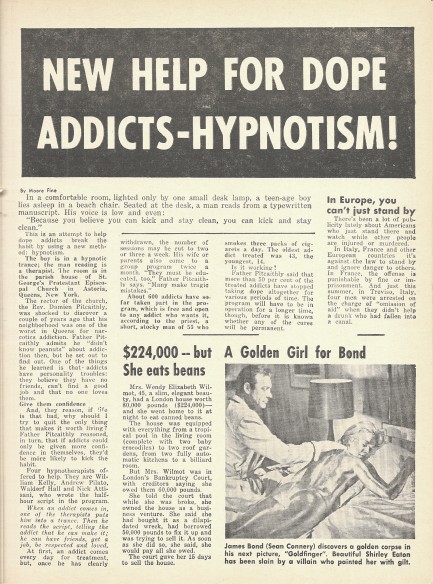 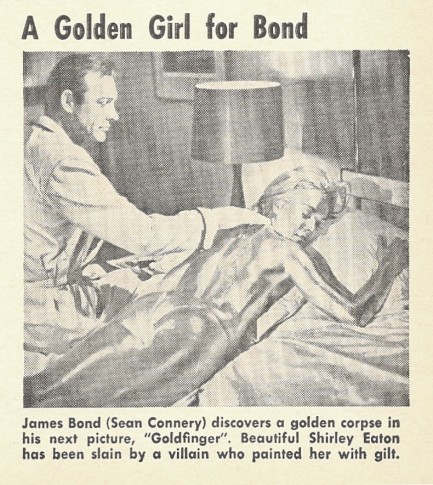 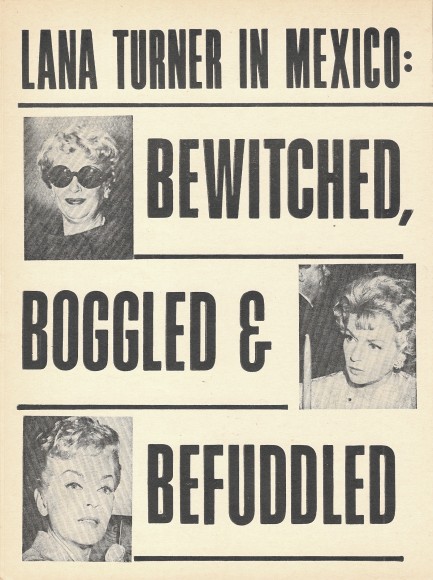 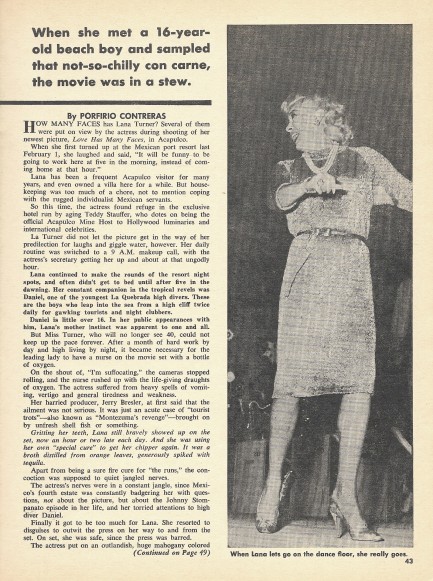 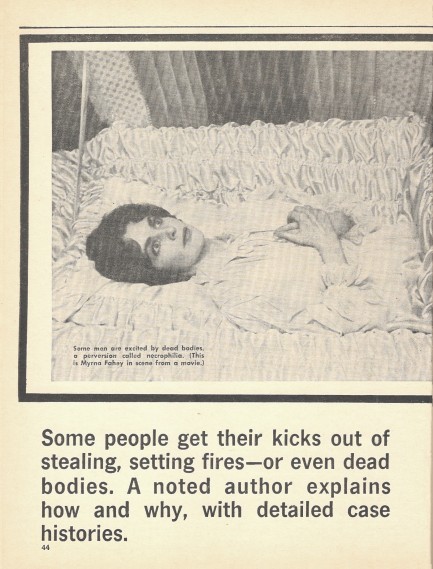 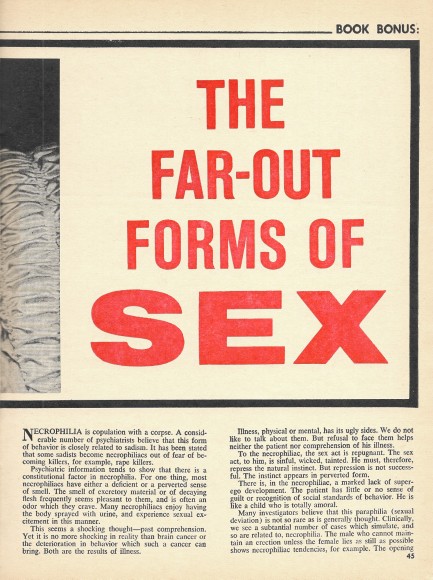 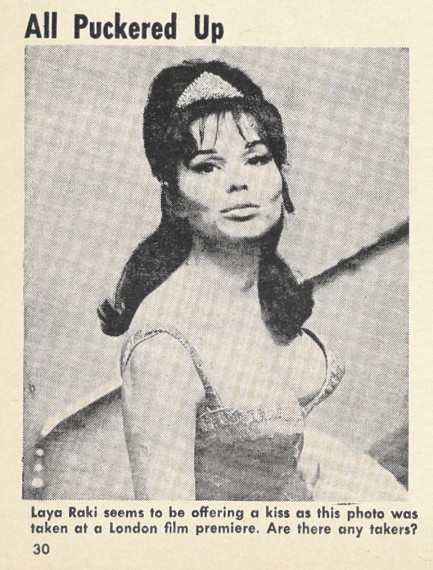 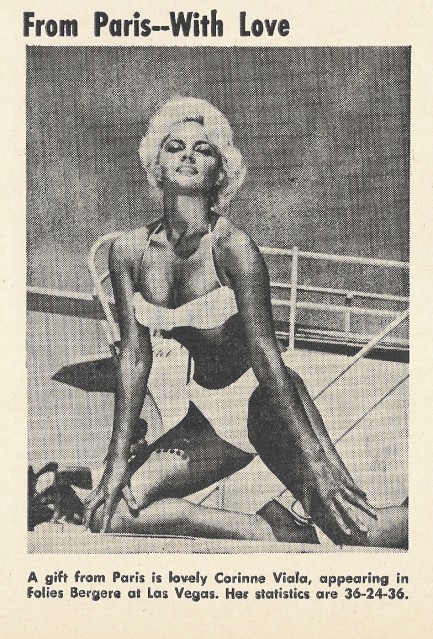
 It was the Whisper heard from coast to coast. 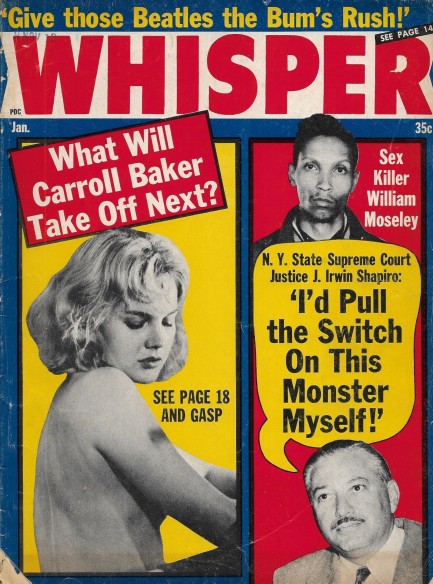
Above is a cover of the tabloid Whisper from January 1965, with actress Carroll Baker, convicted murderer Winston Moseley, and New York judge J. Irwin Shapiro starring on the front. But before we get into the magazine, we want to share the good news that our longtime scanning problems are fixed. We didn't get a new scanner, though. We got a new computer—a Mac Studio with plenty under the hood. It's quicker than the old Mac, but it also changed the functionality of the scanning interface. The whole process runs differently, and is about three times faster now. So you'll be seeing more magazines in the future. Turning back to Whisper, Winston Moseley—who editors call William for some reason—was America's villain of the moment for the murder of Catherine Genovese, who he stalked, stabbed with a hunting knife, then found again where she had taken refuge in a building, and finished her off. Additionally, Moseley was a necrophiliac. He raped his victims—of which there were three total—post-mortem. Of the trio of victims Genovese is the one that's remembered today because her murder sparked a national reckoning about the relationship between citizens and the police, as well as life in big cities, because the press reported that thirty-eight people had seen the crime happening but had done nothing. As it turned out, that number was wildly inaccurate, but never let the truth get in the way of perfectly cooked, juicy tabloid outrage. A quote appeared in nearly every story about the murder: “I didn't want to get involved.” New York City—where the crime occurred—and other metropolitan centers were criticized as uncaring places. Author Harlan Ellison, who at that time was writing urban crime fiction, weighed in, saying, “not one of [the witnesses] made the slightest effort to save her, to scream at the killer, or even to call the police.” Peak outrage was achieved by New York State Supreme Court Justice J. Irwin Shapiro when he expressed a desire to execute Moseley himself. In the end, Moseley wasn't executed at all. He died in prison in 2016 at age eighty-one.
Elsewhere in Whisper, you'll notice that the magazine is—unsurprisingly, given the time period and nature of the publication—antagonistic toward gay men, as demonstrated by the panel with the blaring text: “Who's Queer Asked the Peer?” But what is a surprise is that later in the issue the editors run a detailed piece on transvestites and transsexuals, and the approach is very different than the contempt shown toward homosexuality. As we've pointed out many times before, mid-century tabloids had a deep interest in trans issues. The story is titled, “A Doctor Answers What Everyone Wants To Know About Sex Change Operations.” The tone is as follows:
The condition he referred to was the common plight of all male transsexuals. Physically he was a man, but emotionally and personality-wise he was a woman, a condition that made it difficult to find successful employment, and to live at all happily. Fortunately, in his case, he had a lawyer and a wise judge who were able to help him in his wish to go to Europe for a sex change operation so that his body could be brought into greater harmony with his mind, and enable him to work and live with a degree of happiness he had never known before.
That's respectful—if not even compassionate—for a 1965 publication considered lowbrow by sophisticated readers. Is it a paradox that the magazine could be so evil toward gay men, yet so civil toward transsexuals? We think so, and we'd love to know the thought process behind it. While we're puzzling that out, you may want to move on to Whisper's slate of celebrity news. Everyone from Romy Schneider to Ernest Borgnine get their due exposure. We've uploaded the magazine's “Behind the Whispers” feature, so you can get the dish on a few Hollywood stars. Please enjoy.
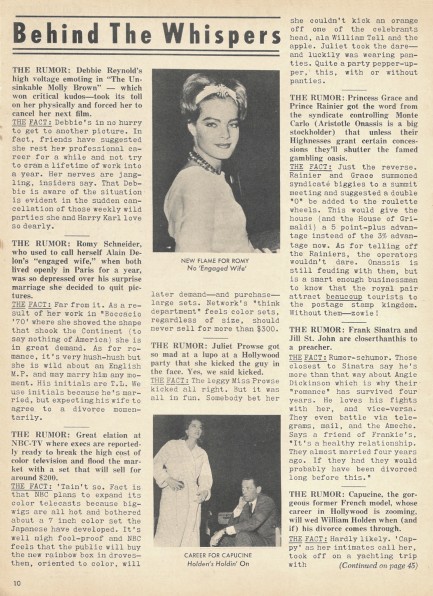    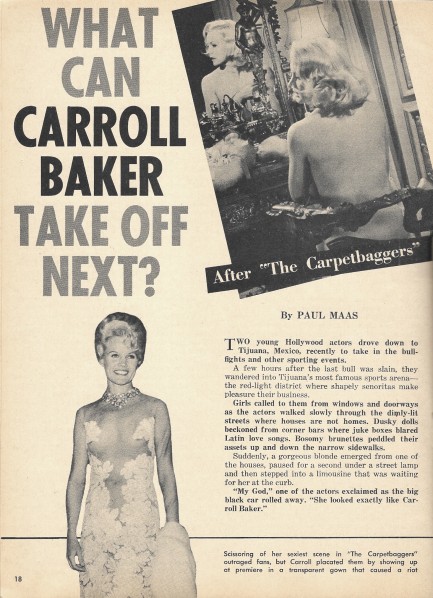  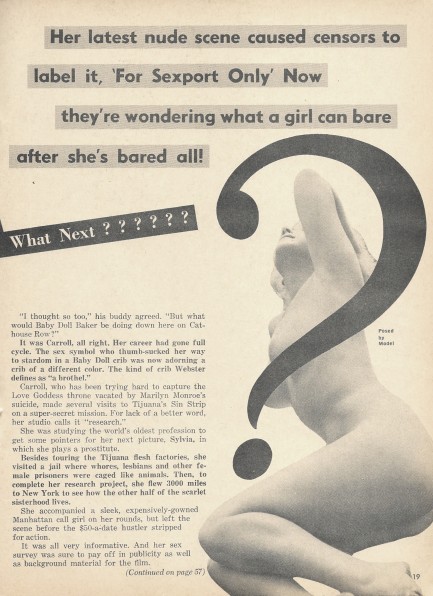 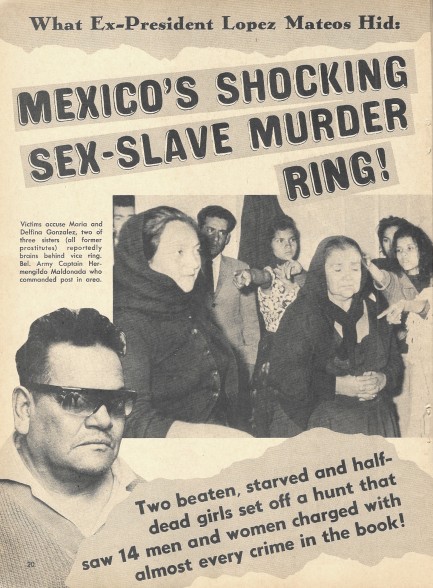 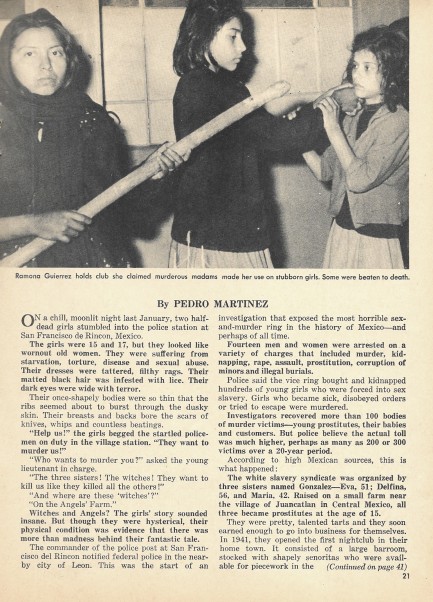 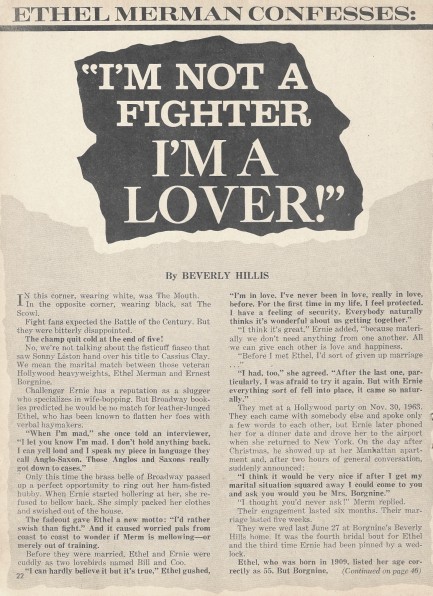 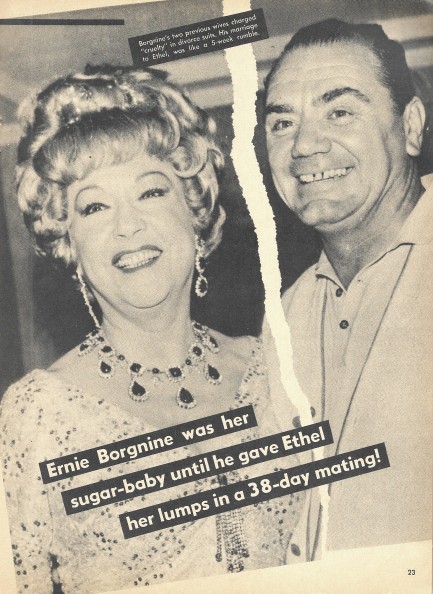 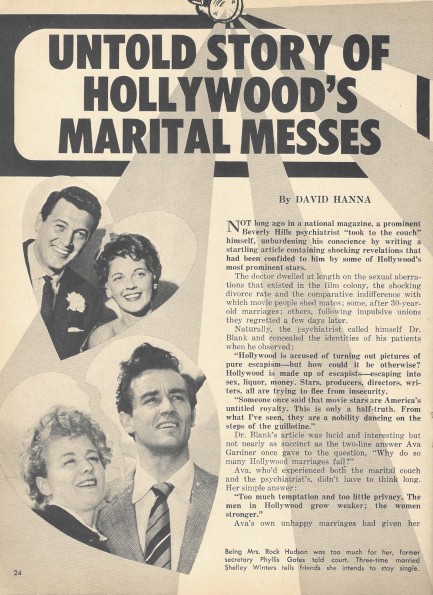 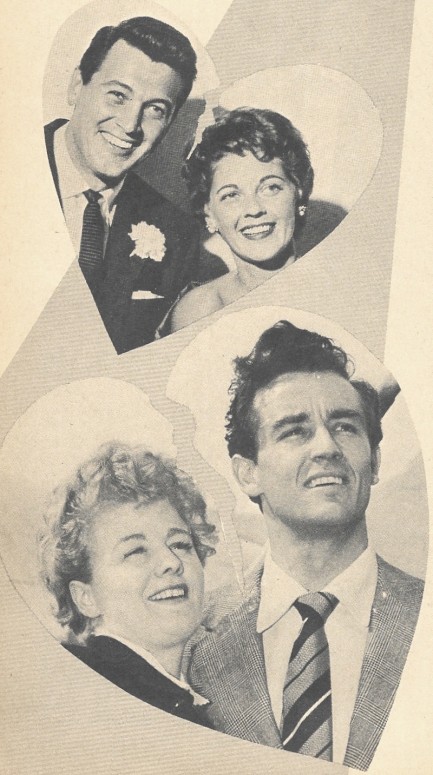 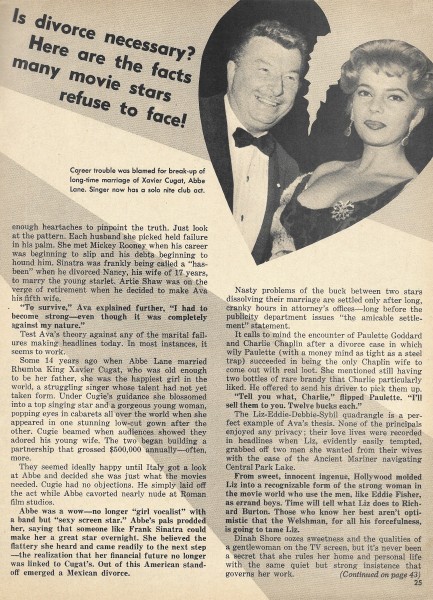 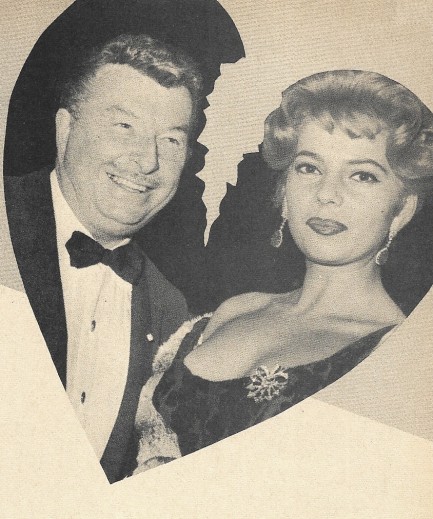  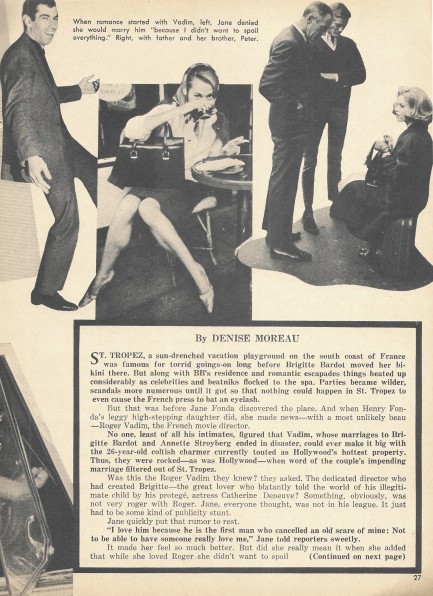 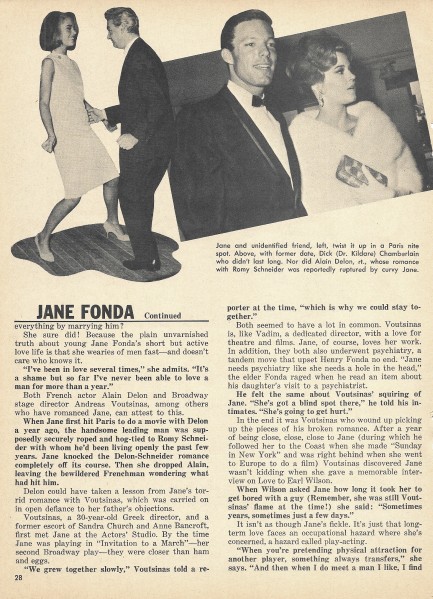  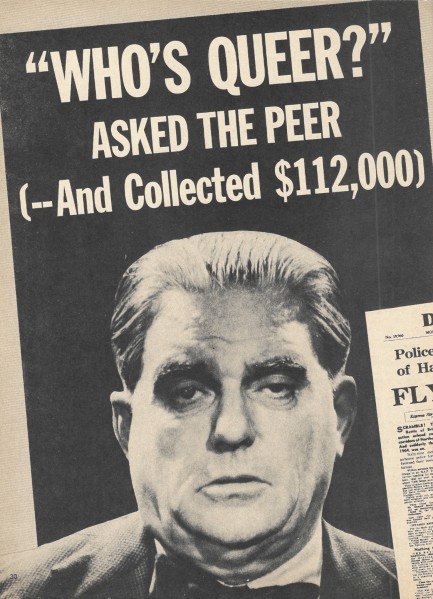  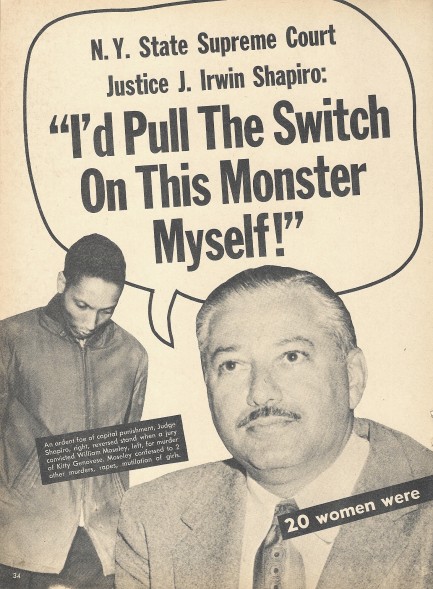 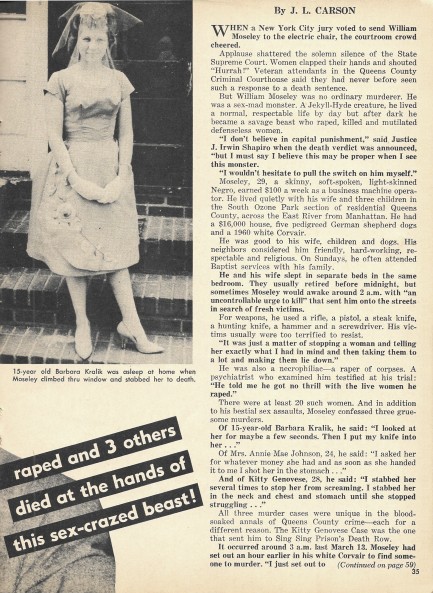  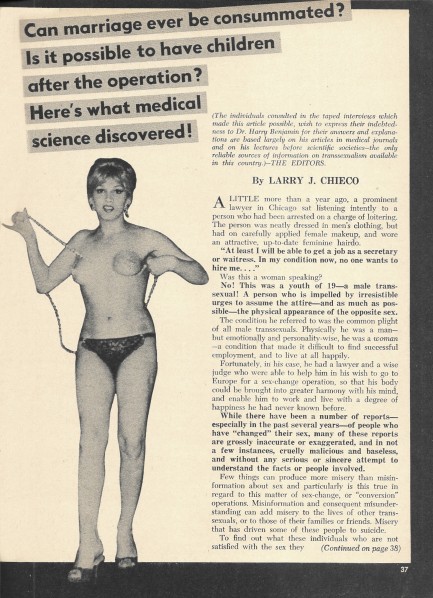 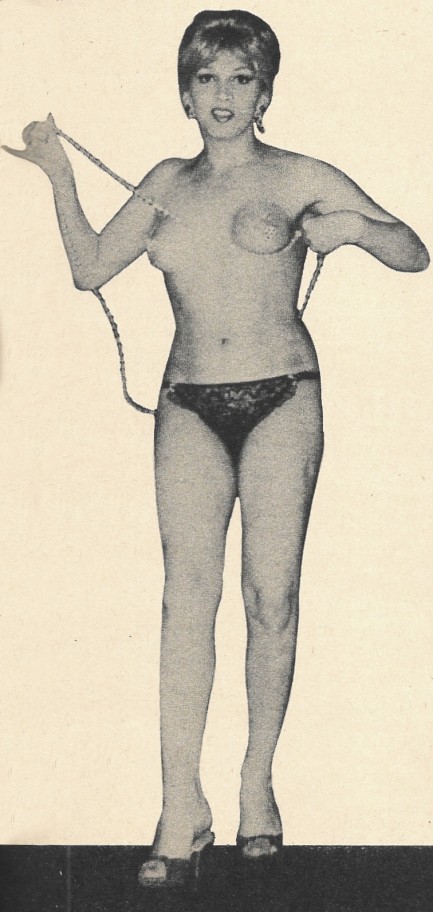 
 Uh, Stella. I know it sucks to be filthy. We all feel that way. But that was our drinking water. 
The incomparable Stella Stevens takes a bath in a 55-gallon drum while on location in Mexico for the 1966 thriller Rage. The movie is about a man (Glenn Ford) who contracts rabies, and owing to its desert setting Stevens spends a lot of time looking sweaty—which is where this moment might come in, though it's also possible it's a pure promo shot with no corresponding scene in the film. The photo is often mistaken as coming from 1970's The Ballad of Cable Hogue, a movie in which Stevens also bathes outdoors. But she's in a large wooden cask in that one. We have a couple of other excellent Stevens promo images for you here and here. Edit: We got a quick and short e-mail from our friend Herman: "It's in the movie." And he sent the below screenshot. So there you have it. Stella gets wet, and that's always a good thing.
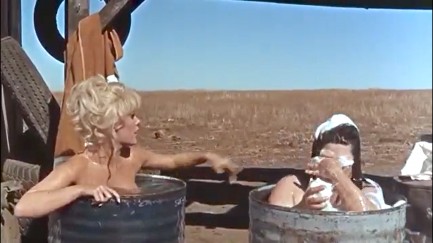
 Fillette gets overheated and the final result isn't pretty. 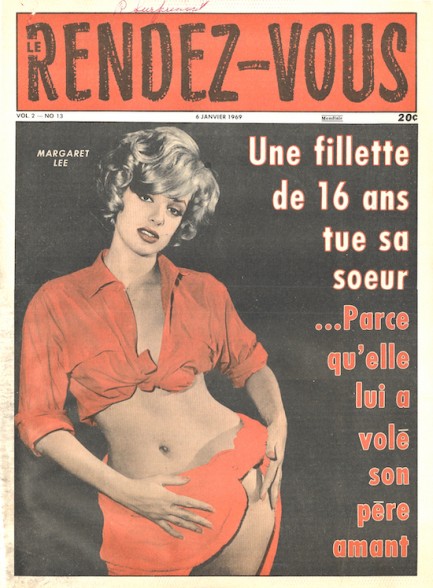
Montreal based Le Rendez-Vous is one of the more interesting mid-century tabloids. It faithfully catalogued celebrity, crime, and nature's misfortunes and atrocities—the classic tabloid formula—but did so with an extra layer of brutality that's amazingly raw for a Canadian publication. Was it that way because Canada was such a safe country and its readers liked to walk on the dark side? We think that could be a factor, though it's true to an extent for all tabloids that their readers seek exotic thrills. But as if to prove our point about Le Rendez-Vous, the crime stories in this issue from today in 1969 all come from outside countries: Mexico, South Africa, and the good ole USA. Canada seemingly wasn't a good source of chaos and killing. The editors first pump up the sex factor with British actress Margaret Lee on the cover, then, to the right, you see a stack of text about a “fillette de 16 ans.” No, it's not about a dry-aged steak. It says: 16-year-old girl kills her sister... Because she stole her lover father. Lover father? That sounds ominous. And indeed, turns out a Mexico City girl named Amalia Martinez, her sister Cristina, and father Ernesto, were in an incestuous love triangle. Amalia solved this family beef by shooting her sister in the head. “That little silly girl,” she said after being arrested, “got what she deserved.” Clearly she still hadn't quite worked through her anger. Probably she always had to share everything with her sister, and usually got the short end of the stick. It's quite a story from Le Rendez-Vous—100% prime tabloid journalism.
Elsewhere in the issue readers get a feature on circus performers, including a photo of a contortionist that brings to mind the time we saw a woman in Marrakech crawl through a tennis racket (we were searching for a cursed monkey's paw, but seeing that feat was a worthy consolation prize). Also inside is Croatian actress Sylva Koscina on the Côte d'Azur, Italian actress Antonella Dogan in the centerfold, ex-first lady Jaqueline Onassis in Greece, and our old friend, model and actress Donna Marlowe, in a bikini. We have plenty of scans of those items and more below, two other issues of Le Rendez-Vous here and here, and more from this publication to come.
 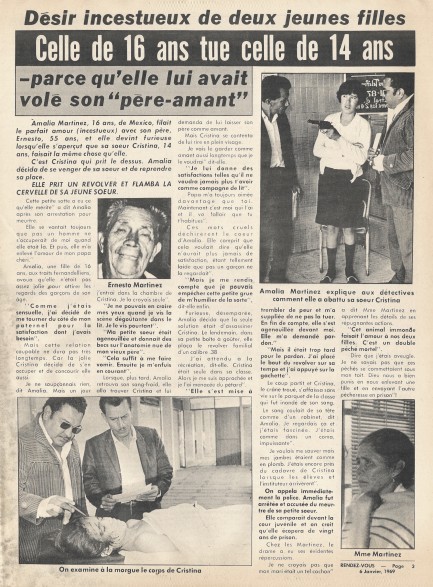 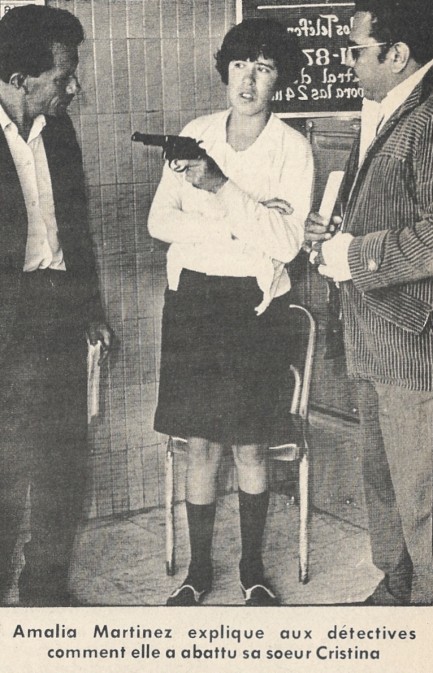 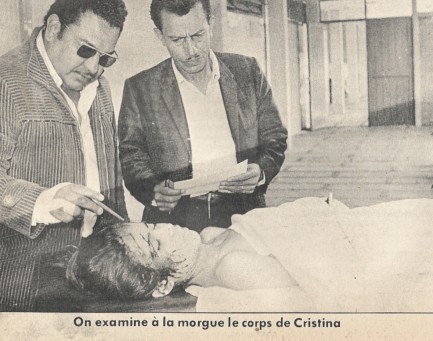 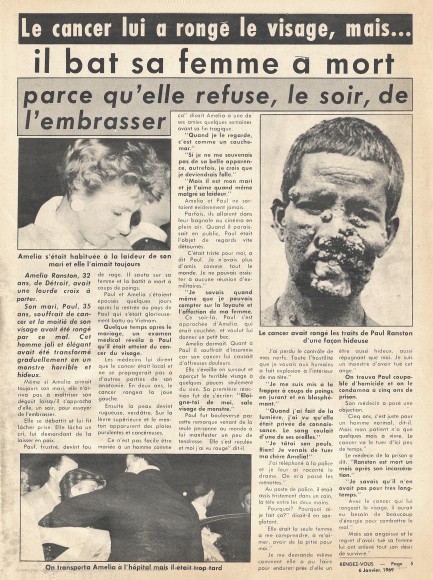 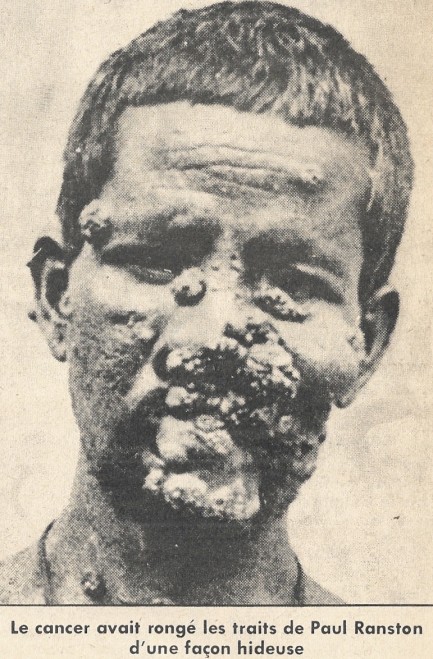 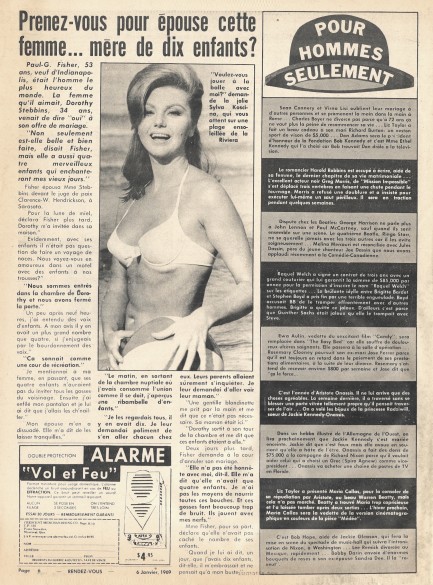 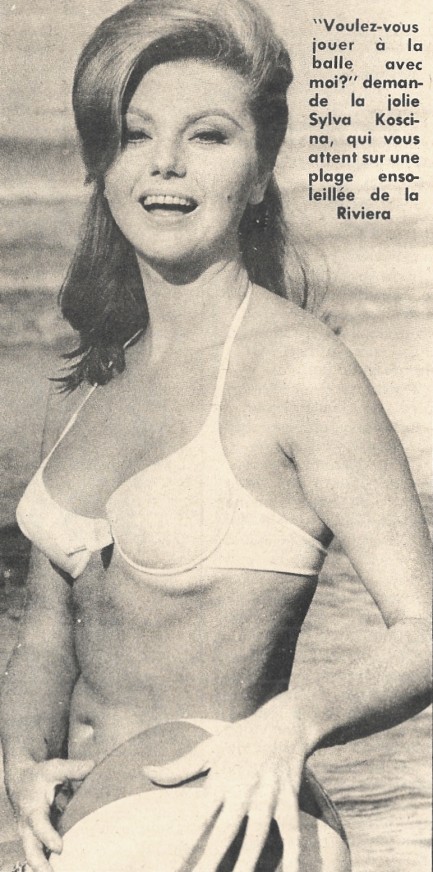   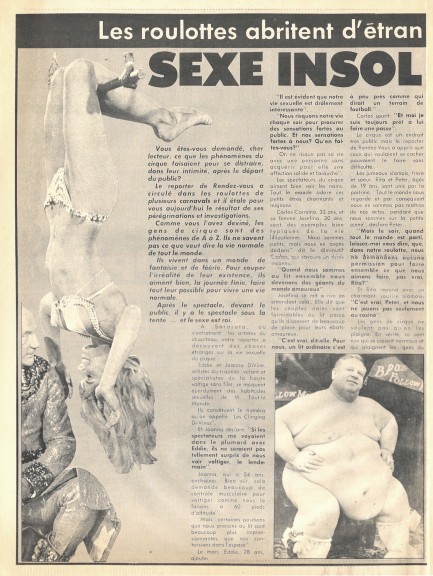 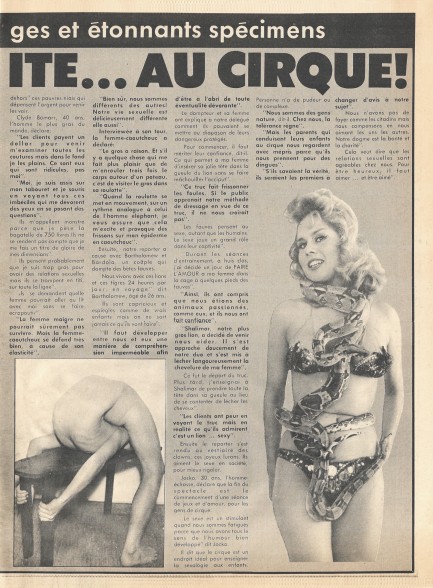  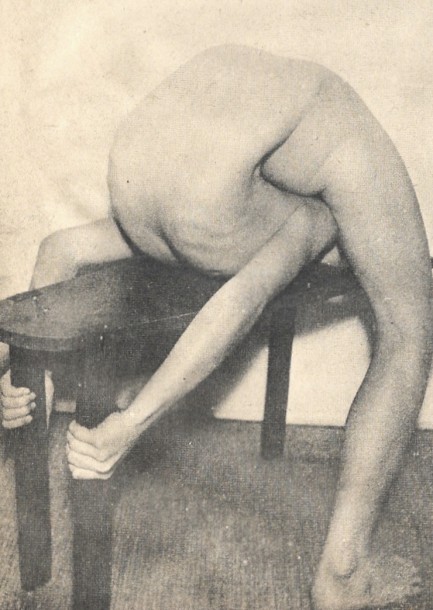   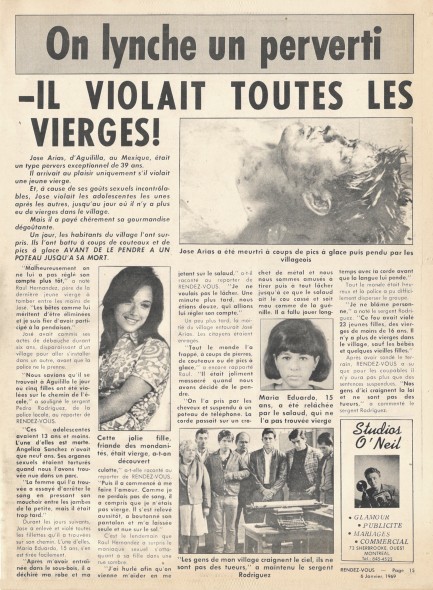   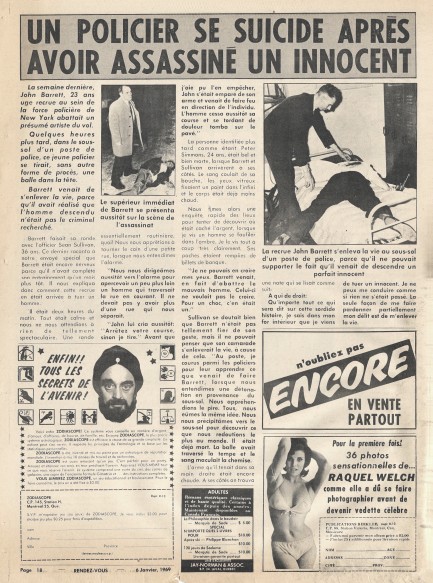 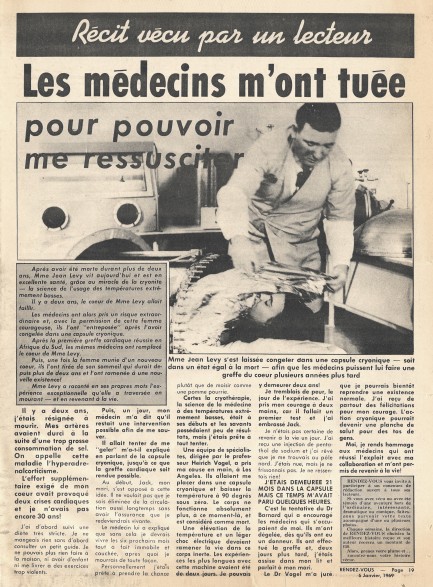 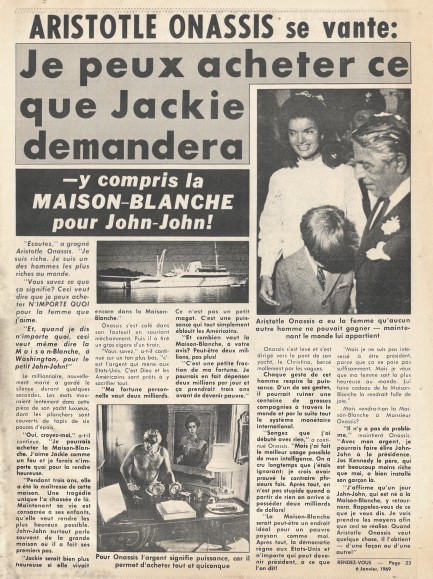 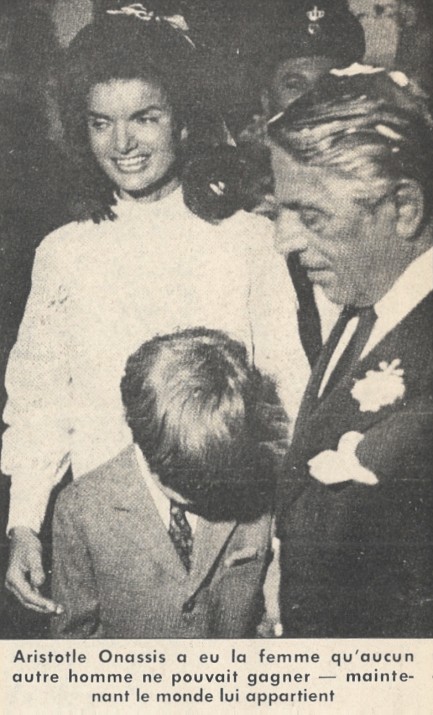 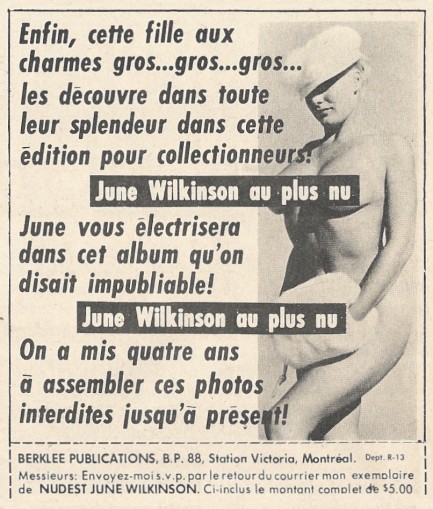 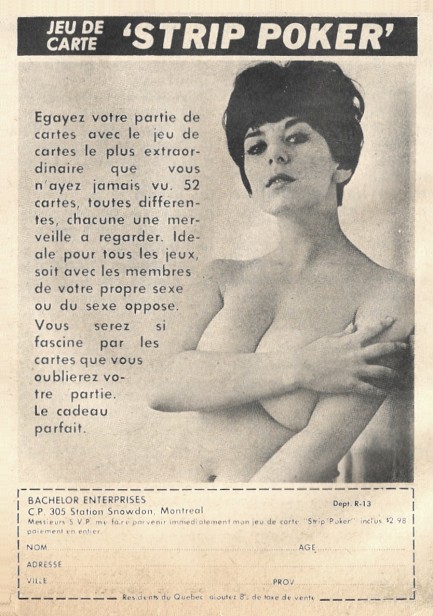
 Montalbán makes his deepest fantasies come true. 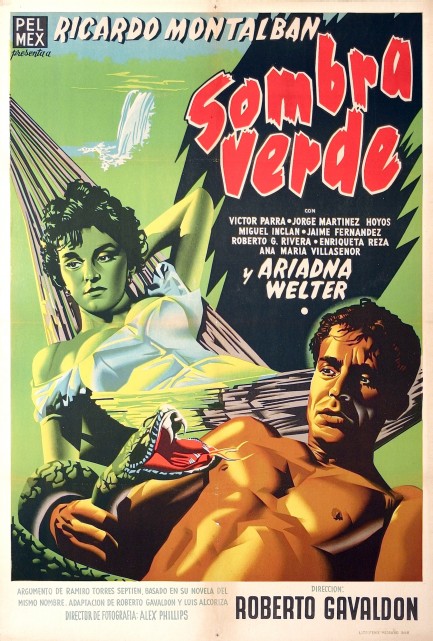
Sombra Verde, aka Untouched, was a romantic adventure made in Mexico, based on a novel by Ramiro Torres Septien, and starring Ricardo Montalbán, who was establishing himself in Hollywood but also returned south for occasional productions. The promo poster is amazing, done in that particularly Mexican mid-century style that echoes art deco. In this example, you can see those elements most clearly in Montalbán's abs, the texture of the dress on the female figure, and the lines of the hammock in which she reclines. We've shared several of these masterful concoctions, and you can see them by starting at this page and following the links.
In Sombra Verde Montalbán plays a scientist dispatched to the state of Veracruz to search for barbasco roots used for pharmaceutical production. He hires a guide named Pedro, and the pair head into the trackless wilderness. Montalbán soon grows distrustful of Pedro, and when they get lost tensions rise. No worries, though—Pedro doesn't last long (though his death scene takes forever) thanks to a poisonous snake. After wandering alone for a period, Montalbán finally stumbles across some inscrutable villagers, including the beautiful Ariadna Welter, who instantly makes his little Mr. Rourke stand at attention. Montalbán is married, but with Welter flouncing about his vows become a secondary concern, and romance ensues. The father in this scenario, however, played by Victor Parra, is bent on keeping his daughter pure, so what you ultimately get is a star-crossed love story in the dripping jungle.
There are some moments that may verge on accidental comedy for modern viewers—Montalbán fruitlessly sucking poison out of Pedro's leg comes to mind, as does the scene where he looks to the sky and sees about thirty buzzards circling, but it all works fine because he's a born star who handles this adventure with ease and confidence. We can't help thinking it's a shame he got few leading opportunities in Hollywood. He surely made more money there than in Mexico, but on the other hand his countrymen knew top level talent when they saw it, and knew what to do with it. Sombra Verde, despite some melodramatic excesses, shows Montalbán's quality. It premiered in Mexico today in 1954.
 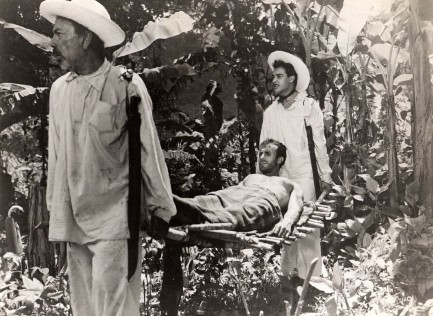 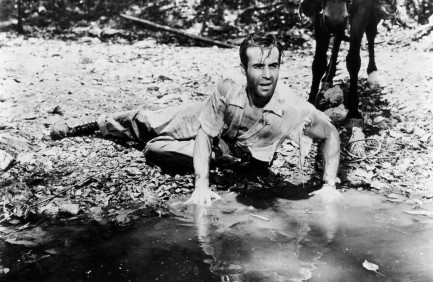 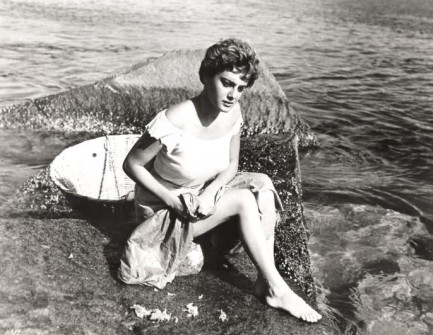   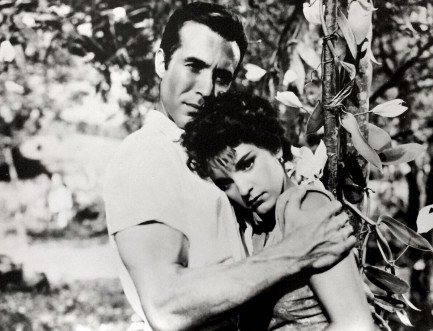 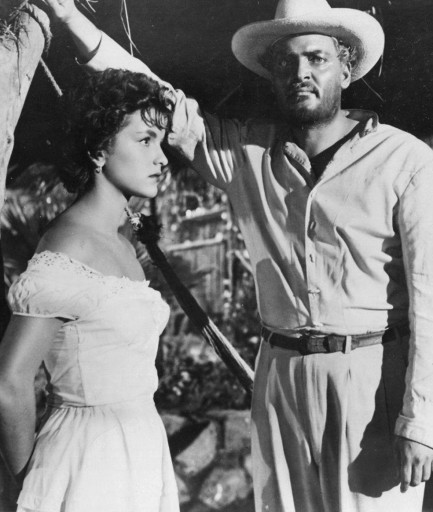 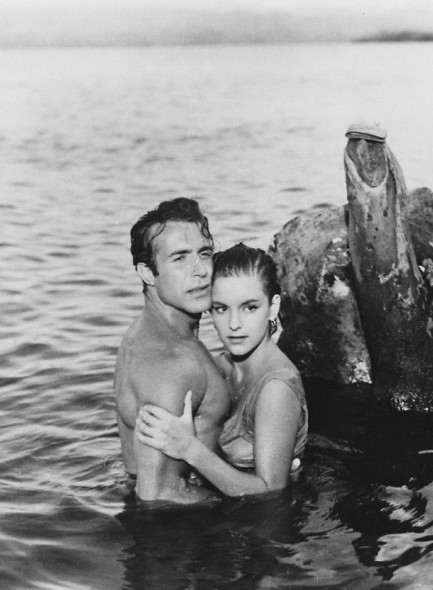  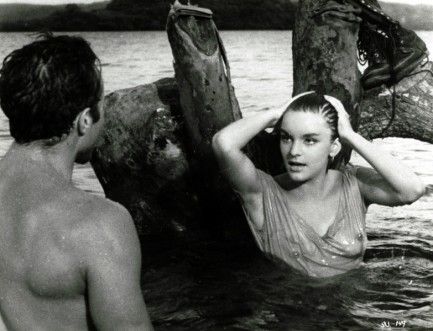 
 Just a D.O.G. going about his J.O.B. 
Those of us in fat, modern societies tend to forget that hunger is probably the number one behavioral driver inscribed in our genes. It need not be said that this especially goes for animals. To a domesticated dog humans are a good provider of meals, but to a wild dog that's hungry, a human—once he stops moving around, throwing rocks at you, and yelling weird mouth noises at you—becomes the meal. That's sometimes the case even with domesticated dogs, under specific circumstances. Pet dogs trapped with dead owners in houses, apartments, or even sometimes in the woods, start chewing on master's face when they eventually get hungry.
This week in Zacatecas, Mexico a cartel related gang killing led to the grisly sight of a dog trotting down a local street with a severed human head in its mouth. A bystander filmed the animal as it was busily taking care of job one: discreetly get the head somewhere quiet and safe to enjoy in peace. A dog carrying a head presents an awkward mental image, so we thoughtfully provided the camera phone screen grab above. It's low-rez, but as you can see (and never unsee) the dog carried its intended meal upside down by a chunk of handy neck flesh, easy as pie. Dogs are MacGyverish when they need to be. Years ago we were at a barbecue when one jumped on a picnic table, grabbed a pot of pork and beans by the handle, and fled into the nearby trees.
This decapitated head story caught our eye not just because it's unusual, but because PSGP has a history with wild dogs. There was a pack that terrorized the somewhat isolated barrio where he lived in Guatemala, and their aggressive behavior was a problem. They surrounded him more than once. But he was sympathetic to their difficult lives, so he gave them a massive pig's head to eat. He cooked it especially for them, though he admits he didn't season it. Bland or not, he and the dogs subsequently reached good terms, and remained that way. The point is, since he's seen a dog carry a head, this Zacatecas story resonated.
It's important to note at this point that while dogs will eat humans—in part, or given the chance, in whole—that doesn't mean it's a preferred or easy decision. The Zacatecas dog was surely wondering, “Am I still a good boy?” And the answer he probably came up with was, “Let me eat first, have a good scrotal lick and a nap, and I'll get back to that perplexing conundrum later, assuming I remember to do that.” Unfortunately, he never got the chance, as he was relieved of the head by some human killjoys. He'll get another opportunity, though. The cartel wars always provide.
 You knew those Reese's Cups were mine but you ate them anyway! Was it worth it? Well? Was it worth it? 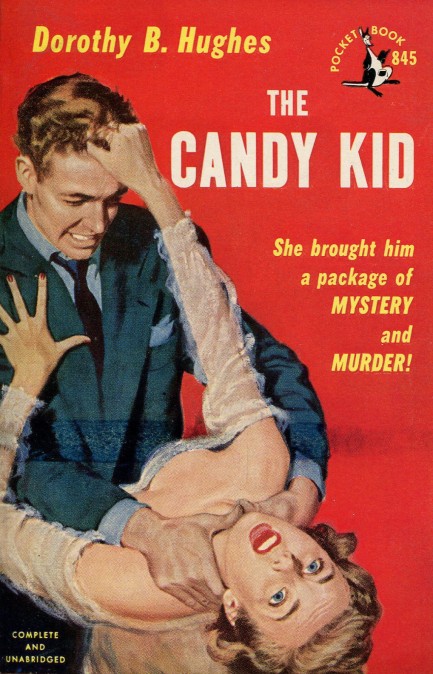
This is a rarity on mid-century paperbacks—the strangler on Edward Vebell's cover for the 1951 thriller The Candy Kid is the protagonist. We almost never see one like this where the aggressive male isn't the villain, but it happens. In this case, he thinks the femme fatale has murdered his cousin. But he gets ahold of himself after a few seconds and gives her a chance to convince him that he's wrong. Telling you that isn't a spoiler, because the rear cover text reveals the murder anyway, and the hero's reaction isn't a turning point within the plot. He's pissed. But he gets over it.
The Candy Kid was written by the respected Dorothy B. Hughes, and she sticks close to the American southwest she explored in books such as 1946's Ride the Pink Horse. Here her main character, José “the Strangler” Aragon, is randomly selected on the streets of El Paso by upper class beauty Dulcinda “Sore Neck” Farrar to do a shady favor—take an envelope to across the border to Ciudad Juarez and exchange it for a package to be returned to her. She's chosen him because he looks like an itinerant laborer, like someone who needs, “un poco dinero.”
Actually, though, Aragon is a well-to-do rancher. He'd just gotten back from cowpunching when Dulcinda saw him, and he was sweaty and covered in grime. The whole thing was a joke to him. Based on her assumption, he'd pretended to be an immigrant day laborer, planning to reveal himself as a man of means to the pretty gringa later. But he takes more and more interest in this package business, and ends up performing the errand. Then the package is stolen from him.
What follows is a mystery involving a Greek crime kingpin, murder and revenge, twists and surprises, and unsolved crimes across the border. The odd title of the book comes from Dulcinda's name. Everyone calls her Dulcy, which in Spanish sounds like “dulce,” which means “sweet,” which causes one of the Mexican characters trying to remember her name to say, “that candy kid.” It's an involved journey. But then so is the tale.
We'll just come out and say it isn't Hughes' best, but she's always a fascinating author, particularly here, where she deftly captures the border atmosphere and attempts to portray a Mexican-American character who speaks Spanish and is comfortable on either side of the Rio Grande, yet is culturally distinct from his cousins down south. Some of those interactions have subtle class tensions that make them among the most interesting in the book. Other areas of the story are less successful. The biggest flaw is character motivation—Aragon has no compelling reason to get involved in Dulcy's troubles until his cousin dies, at the halfway mark. Following through on a prank just isn't enough. But you can't fault the level of technical skill on display, although Hughes writes in an unusual style filled with comma splices: It would have been funny, he was always the one who delayed the crowd, he knew everyone from Chihuahua to Mesa Verde. It works fine, which proves that if done just right an author can break any rule they want. Well, almost any rule. A crucial one for genre fiction is: make sure your protagonist really wants something. Even Hughes wasn't able to break that one and get away with it.
 There's no bottom in sight. 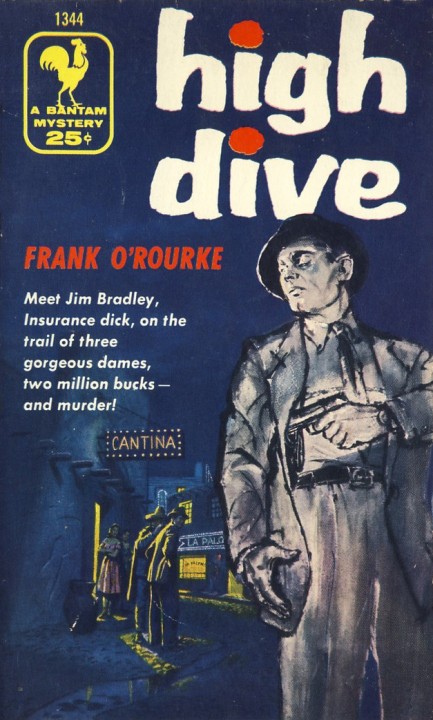
In High Dive Frank O'Rourke uses one of the time-honored tropes of mid-century crime fiction—the escape to Mexico. This 1955 Bantam edition has cover art which we like very much. It successfully captures the mysterious mood of the story, which centers around an unnamed Pacific resort town. That town is obviously Acapulco, a fact made clear from the book's cliff diving scenes. The fun begins when an insurance investigator named Jim Bradley rents a house in order to lie in wait for armored car robbers he feels will turn up there with the stolen loot sooner or later. He whiles away the months interacting with a menagerie of secretive expats, sultry women, and his true and faithful love Maria.
The most interesting aspect of High Dive is its style. It's lightly Hemingway flavored, making for a curious hybrid—part mystery, part lost generation. In addition to the prose, Hemingwayesque elements include: a sexually dissatisfied wife and a sad, cuckolded husband acting out their tragic pantomime of a marriage; numerous meet-ups for cocktails and generally constant drinking; an atmosphere of Americans existing but not thriving in a foreign land; and a local spectacle—not bullfighting, but cliff diving—that intermittently shifts from background to foreground in order to frame certain plot points. Yeah, it's pretty good, this book.
O'Rourke, who also published as Kevin Connor, Frank O'Malley, and Patrick O'Malley, mostly wrote westerns, and perhaps that's why he seems so comfortable in this Mexican space. For some readers it may take too long—about half the novel—for the protagonist to make actual headway solving the case of the armored car loot. His break finally comes when the wife of one of the robbers turns up in town. Or at least that's what he thinks. But is she really involved, and is her husband really one of the crooks? Perhaps, but by then the missing money isn't the attraction of the story. It's the disparate personal narratives, which are resolved as appropriate—triumph, tragedy, irony, and all the rest. High Dive was a pleasant surprise.
 James Mason's tropical paradise may not be an accurate portrayal, but you can't say it's not fun. 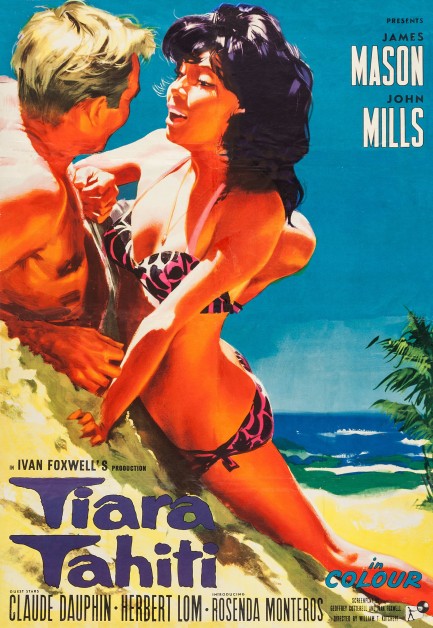
This nice poster was made for the British produced South Seas movie Tiara Tahiti, which opened in the UK today in 1963. There are a few posters but this one is the best, we think, though we had to do some heavy retouching to make it presentable. An alternate promo appears below. The movie is a comedy-drama about former business partners played by James Mason and John Mills, who clashed in England, fought the Germans in World War II, and have both turned up in Tahiti during peacetime. Part of their dislike for each other is due to their opposite personalities. Mills is the uptight sort who wishes to be respected but isn't, while Mason is naturally likeable and happy-go-lucky. One reason for him to be happy is that his girlfriend is Rosenda Monteros. She's supposed to be an island girl, and though she's Mexican in real life rather than Tahitian, she's smoking hot whatever her place of birth.
The movie is based on a novel of the same name by Geoffrey Cotterell, and we're tempted to acquire it. We've gotten pretty good at filling in between the scenes of vintage cinema, and because Monteros is Mason's girlfriend but has flirtatious interactions with other men, we suspect there's an explicitly sexual aspect to the book that was tossed into the screenwriter's garbage bin. We say that because we've read a couple of novels from the mid-century period set in Tahiti, and in both of those local women were portrayed—and we have no way of knowing whether this was true or a white Western fantasy—as readily available. Sex is only hinted at in Tiara Tahiti, but Monteros has a nude scene in a waterfall pool and another topless sequence, and she looks flat-out astonishing in both. We gather these occurred only in the non-U.S. version. Well, try to find that one.
You won't be surprised to learn that there are a few offensive characterizations here, even up to plastering Czech actor Herbert Lom with makeup and prosthetic eyes so he can play a Chinese islander named Chong Sing. There are some who resent this kind of thing being pointed out, but realizing how anachronistic these sorts of elements are isn't different in essence from noting that old vampire movies have bats on strings. It's impossible to look at it and not see it as kind of dumb. There's a better way to do it now, that's all, and that better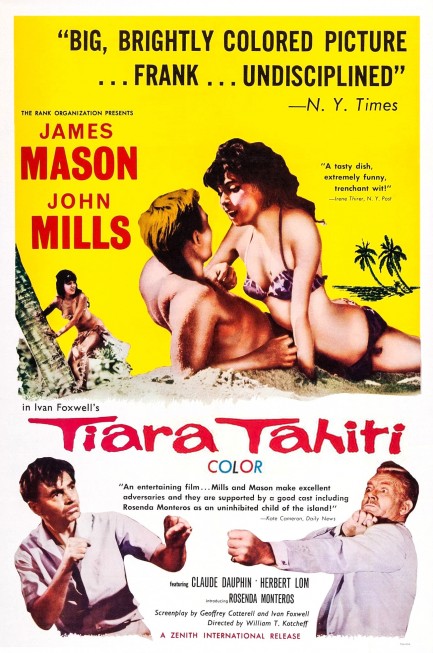 way also offers opportunities in cinema for historically erased groups like the Asian actor who could have played Chong Sing. But movies are still just attempts at entertainment. With notable exceptions like The Birth of a Nation, deliberately harmful portrayals of selected ethnic groups was not a goal. As it happens, Lom is quite good in his role. way also offers opportunities in cinema for historically erased groups like the Asian actor who could have played Chong Sing. But movies are still just attempts at entertainment. With notable exceptions like The Birth of a Nation, deliberately harmful portrayals of selected ethnic groups was not a goal. As it happens, Lom is quite good in his role.
While he and Monteros are important secondary attractions, it's Mason who provides the real reason to watch Tiara Tahiti. He's perfect as the layabout main character—charming, clever, selfish, and always able to improvise when circumstances require it. His old rival Mills is in Tahiti to develop pristine local land for a hotel chain, while Mason is on the opposite side of this paradise-wrecking business deal. He manages to get hired as the project's local expert, but all the while is trying to sabotage the deal from the inside. Of course, Tahiti eventually became dotted with hotels and barely-used millionaire hideaways like everyplace else, and currently is taking steps to reduce mass arrivals from overseas, but within the context of this quaint movie from a lifetime ago, maybe Mason can win. However it turns out, Tiara Tahiti should give you a few smiles.
 The liar that came in from the cold. 
Above is a nice Belgian poster for the Mexican melodrama Susana, which was known in Belgium as Susana l'Impure in French, and Susana, de Eerloze in Dutch. We talked a long while back about this story of a family shaken by the arrival of sexy young Rosita Quintana. Shorter version: not everybody caught out in a rainstorm deserves to be rescued. The movie premiered in Mexico in April 1951 and reached Belgium today in 1955.
|
 |

The headlines that mattered yesteryear.
1939—Batman Debuts
In Detective Comics #27, DC Comics publishes its second major superhero, Batman, who becomes one of the most popular comic book characters of all time, and then a popular camp television series starring Adam West, and lastly a multi-million dollar movie franchise starring Michael Keaton, then George Clooney, and finally Christian Bale. 1953—Crick and Watson Publish DNA Results
British scientists James D Watson and Francis Crick publish an article detailing their discovery of the existence and structure of deoxyribonucleic acid, or DNA, in Nature magazine. Their findings answer one of the oldest and most fundamental questions of biology, that of how living things reproduce themselves. 1967—First Space Program Casualty Occurs
Soviet cosmonaut Vladimir Komarov dies in Soyuz 1 when, during re-entry into Earth's atmosphere after more than ten successful orbits, the capsule's main parachute fails to deploy properly, and the backup chute becomes entangled in the first. The capsule's descent is slowed, but it still hits the ground at about 90 mph, at which point it bursts into flames. Komarov is the first human to die during a space mission. 1986—Otto Preminger Dies
Austro–Hungarian film director Otto Preminger, who directed such eternal classics as Laura, Anatomy of a Murder, Carmen Jones, The Man with the Golden Arm, and Stalag 17, and for his efforts earned a star on Hollywood's Walk of Fame, dies in New York City, aged 80, from cancer and Alzheimer's disease. 1998—James Earl Ray Dies
The convicted assassin of American civil rights leader Martin Luther King, Jr., petty criminal James Earl Ray, dies in prison of hepatitis aged 70, protesting his innocence as he had for decades. Members of the King family who supported Ray's fight to clear his name believed the U.S. Government had been involved in Dr. King's killing, but with Ray's death such questions became moot.
|

|
|

It's easy. We have an uploader that makes it a snap. Use it to submit your art, text, header, and subhead. Your post can be funny, serious, or anything in between, as long as it's vintage pulp. You'll get a byline and experience the fleeting pride of free authorship. We'll edit your post for typos, but the rest is up to you. Click here to give us your best shot.

|
|










































































































 way also offers opportunities in cinema for historically erased groups like the Asian actor who could have played Chong Sing. But movies are still just attempts at entertainment. With notable exceptions like The Birth of a Nation, deliberately harmful portrayals of selected ethnic groups was not a goal. As it happens, Lom is quite good in his role.
way also offers opportunities in cinema for historically erased groups like the Asian actor who could have played Chong Sing. But movies are still just attempts at entertainment. With notable exceptions like The Birth of a Nation, deliberately harmful portrayals of selected ethnic groups was not a goal. As it happens, Lom is quite good in his role.